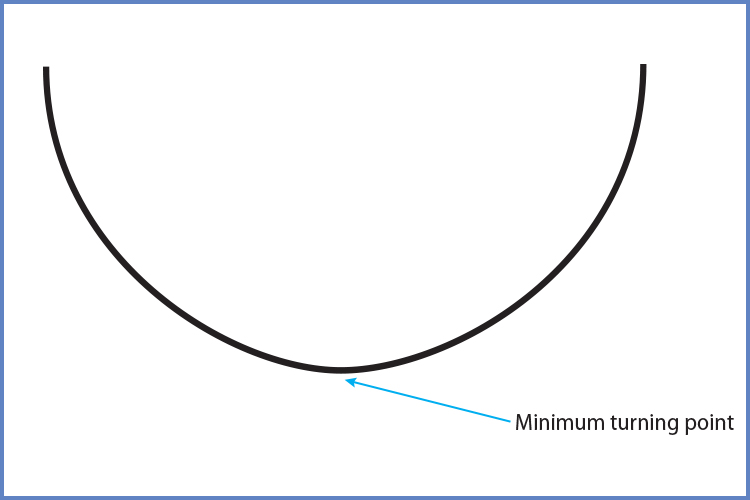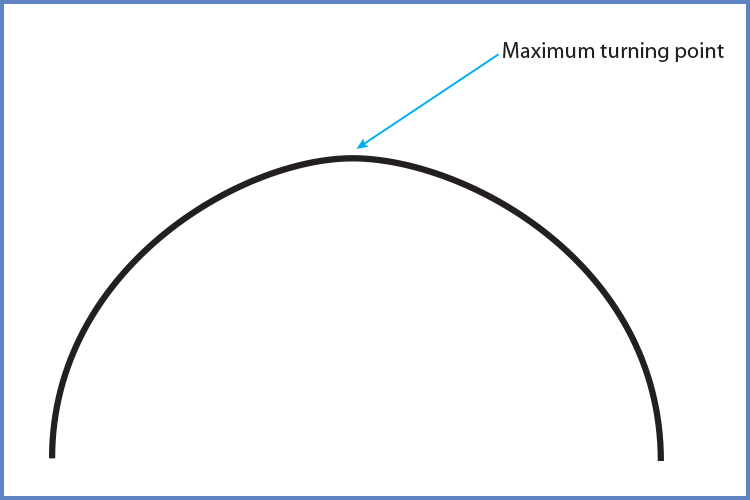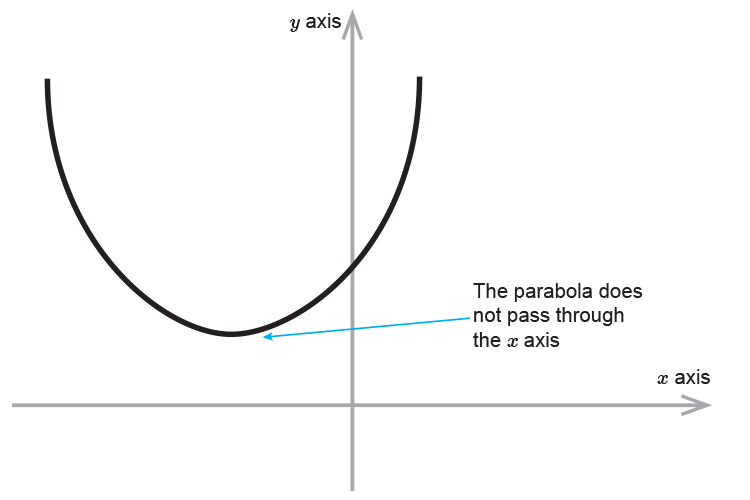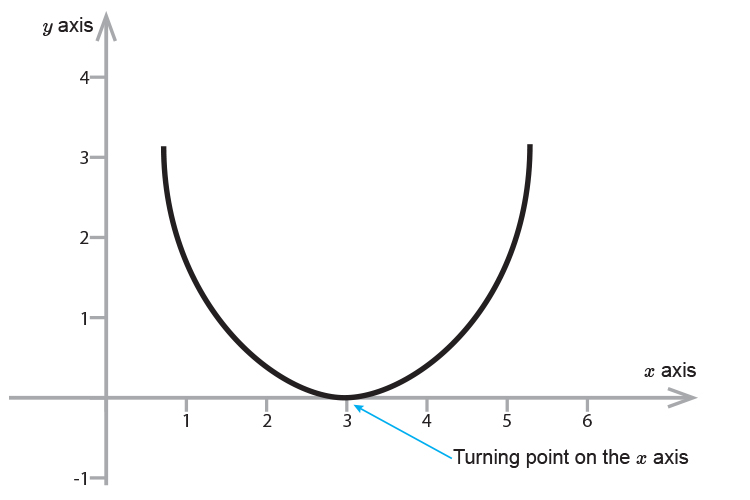Interpreting parabola formulas
The general formula for a parabola is `ax^2+bx+c=y`
Positive and negative `x^2` coefficients
If `x^2` is positive then your parabola will look like this:

If `x^2` is negative then your parabola will look like this:

Can't find the root
NOTE:
See later on finding the solution is finding the root or roots which is where the curve passes the `x` axis.
If in finding the solution to `ax^2+bx+c=y`
`x=+-sqrt(-12)` (for example)
It's not possible to find the square root of a negative number.
(To prove this put 3 then minus 6 into your calculator and then press the root button. You will get an error message.)

Your parabola will look something like the diagram below, meaning that the curve doesn't cross the `x` axis.

NOTE:
`x=+-sqrt(-12)` is called "Quadratics and complex numbers" and if you found this in an exam at this stage you've done something wrong.
Only one root value
If in finding the solution to:
`ax^2+bx+c=y`
`x=3` (for example)
And NOT `x=-1\ \ \ and\ \ \ 2`
Then your parabola will be turning on the `x` axis as follows:

`x=3` Would mean the parabola touches the `x` axis at `x=3` only, once.




